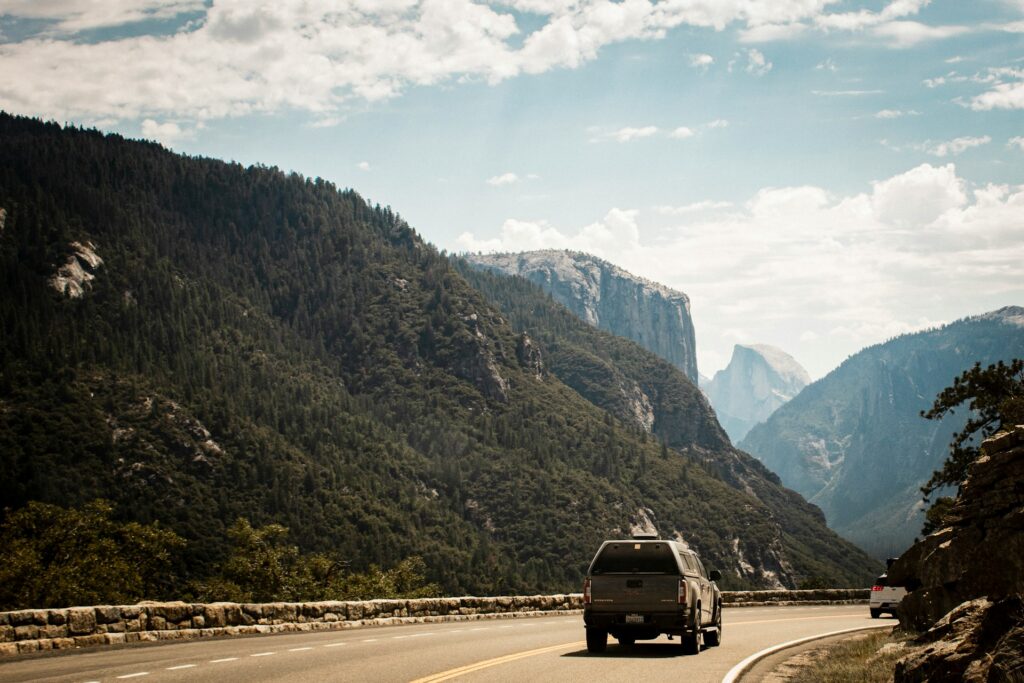Buckle up and get ready to hit the open road!
Whether you’re taking a cross country road trip or just going for a Sunday drive, cruising down the highway can be an amazing adventure. But before you put the pedal to the metal, it’s important to make sure you and your passengers stay safe.
In this article, I’ll share my top tips for defensive driving, planning proper rest stops, avoiding drowsy driving, and more. You’ll be singing along to your road trip playlist in no time once you learn how to navigate the highways and byways like a pro. Let’s fill up the tank and go over some key rules of the road that every road warrior should know. This summer, arrive alive!
Road Trip Essentials: Safety Kit and Supplies for Your Journey
Before going to a road trip adventure, make sure your vehicle is stocked with essential safety equipment and supplies. This will provide peace of mind in case of an emergency or unexpected situation on the open roads.
Emergency kit – Keep a first aid kit equipped with bandages, antiseptic wipes, antibiotic ointment, medical tape, scissors, cold packs, aspirin, and other basic medical essentials. Also pack a flashlight, batteries, jumper cables, tools, duct tape, car phone charger, blankets, non-perishable snacks, and bottled water.
Maps and navigation – Bring along up-to-date road maps and atlases in addition to GPS and navigation apps on your phone or tablet. Reception and battery life are not guaranteed, so have backup wayfinding materials.
Visibility aids – Pack high visibility vests, road flares, reflective hazard triangles, LED flashlights, and glow sticks. Position these at a safe distance behind your vehicle if stopped roadside at night or in bad weather.
Vehicle fluids and maintenance items – Carry extra motor oil, transmission fluid, antifreeze coolant, brake fluid, power steering fluid, and window washer fluid. Also bring rags, paper towels, basic tools, and spare fuses. Top off all fluids before departure.
Tire changing equipment – Make sure there is a properly inflated spare tire along with a lug wrench, jack, and wheel chocks. Be equipped to change a flat yourself or assist emergency crews.
·
Communication devices – Fully charge your cellphone, have a car phone charger, and consider bringing a satellite communication device as backup. Program local police and emergency numbers at your destinations.
Travel prepared so you can handle unexpected situations with confidence. Don’t worry since we are not done yet, in the next we’ll be talking about avoiding road accidents through defensive driving. Let’s also explore the power of technology on the road. Enjoy the journey and drive safely!
Planning Your Route: Apps, Maps and Rest Stops to Keep You on Track
Before heading out on a road trip, it pays to map out your route in advance. This allows you to plan fuel and rest stops, avoid heavy traffic areas, and discover interesting attractions along the way. With smartphone apps and online maps, route planning today is easier than ever.
- Use a mapping app like Google Maps to chart your course. Enter your starting point and destination and select options for avoiding tolls or highways. View travel time and mileage estimates. Then customize by adding stops for food, lodging, sightseeing etc.
- For hands-free navigation, try a voice-guided GPS app like Waze. It provides turn-by-turn directions and can alert you to accidents, speed traps or traffic jams ahead. Be sure to mount your phone safely if using this feature.
- Rest areas and service plazas along major highways make convenient places to stop, stretch your legs and refuel during long drives. Apps like Rest Area Finder pinpoint locations nationwide. Roadtrippers lets you collaborate on custom maps with friends. You can chat within the app while finalizing your itinerary.
- Don’t forget to download maps offline on Google Maps, Apple Maps or MapQuest before losing cell service in rural areas. This allows navigation sans internet.
Carefully planning your route with helpful apps ensures your road trip goes smoothly from start to finish. Bon voyage!
Driving Tips to Stay Alert and Avoid Accidents on Long Drives
Staying alert and focused on long drives is essential to avoiding accidents. Here are some key driving tips:
- Take frequent breaks to rest and recharge. Every 2 hours or so, pull over at a rest stop to stretch your legs, grab a snack or caffeine drink, and move around for 10-15 minutes. This will keep you from getting tired behind the wheel.
- Adjust your seat position so you’re sitting up straight. Slouching makes it harder to see clearly and could cause back and neck pain over time, interfering with concentration.
- Play music, podcasts, or audiobooks to help your brain stay engaged. Make sure the volume is moderate so you don’t get distracted. • Rotate driving duties if possible. Having another licensed driver with you makes it easier to share time behind the wheel and reduces drowsiness.
- Stay hydrated and avoid heavy foods that cause sluggishness. Keep a water bottle and healthy snacks on hand. Stop periodically to use the restroom-a full bladder interferes with focus.
- Pull over when feeling sleepy. Be aware of signs of drowsiness like yawning, heavy eyelids, wandering thoughts, and difficulty remembering the last few miles driven. These all indicate it’s time to pull over for a quick nap or switch drivers.
- Manage speed carefully. Going too fast reduces reaction time. On the other hand, driving too slow can frustrate other drivers and increases risk to get hit from behind. Use cruise control on long stretches to maintain an appropriate consistent speed. If you got hit from behind, make sure you report it immediately especially if someone is injured. Make sure to consult with a reliable injury attorney to get the rightful compensation you deserve. Read on since we will be discussing more about this before the ending.
Staying vigilant on road trips requires planning and self-awareness. Following these practical tips will help you steer clear of dangerous situations so you can have a safe, smooth journey.
What To Do If Your Hit From Behind
Uh oh. You glance in your rearview mirror and see a car approaching way too fast. Brace for impact! Even a low speed rear-end collision can cause injury and vehicle damage. Stay cool and follow these tips:
- Move to safety. If possible, carefully pull off the road and onto the shoulder. Turn on your hazard lights. Call 911 if needed.
- Avoid extra injury. Remain seated with your seatbelt securely fastened until help arrives. Don’t exit your car near busy traffic. Document the incident. Take photos of damage to both vehicles and get contact/insurance information from the other driver.
- File a report. Alert the police so there is an official record. Provide factual details like location, time, weather and vehicle descriptions.
- Seek medical care. Even if you feel fine initially, see a doctor soon after the accident in case issues like whiplash arise later.
- Contact insurance. Notify your provider about the accident right away. Give statements and photos to support your claim. Be cooperative.
- Get repairs. Use an authorized body shop to fix all damage based on your adjuster’s assessment. Save receipts.
Staying calm and knowing what to do after a rear-end crash can ensure your safety, facilitate insurance claims, and get your car back on the road. Drive defensively and always wear your seat belt!
Conclusion
So there you have it, folks. Cruisin’ down the open highway can be one of life’s great joys. But it also comes with risks if you don’t take proper precautions. Follow the safety tips outlined here – avoid distractions, obey traffic laws, properly maintain your vehicle, drive sober and alert, wear your seatbelt, and share the road responsibly with others. Making good choices behind the wheel will help get you to your destination safely. Wherever the highway takes you next, we hope you feel empowered to travel wisely. The journey ahead holds new adventures as long as we all do our part to care for one another. Now start your engines and hit the road, travelers!

